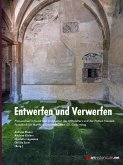In the spring of 1732 Filippo Juvarra sent from Rome an album with 41 Disegni di Prospettiva Ideale meant for August the Strong, prince-elector of Saxony and king of Poland. Bearer of the gift was Antonio Giuseppe Gabaleone Count of Wackerbarth Salmour ¿ the Turin nobleman naturalized in Saxony ¿ who at that time was in the papal city on a secret mission on the king¿s behalf. The album preserved in the Kupferstich-Kabinett of Dresden celebrates the exemplarity of Rome over the centuries. Through its themes, its staged compositions, and its graphic technique, an evocative narration unfolds ¿ a further confirmation of Juvarra's multifaceted qualities as a great director of the arts. The drawings are here analyzed as a whole for the first time, together with some unpublished letters that help shed light on an artistic exchange involving the courts of Rome, Turin and Dresden. --








